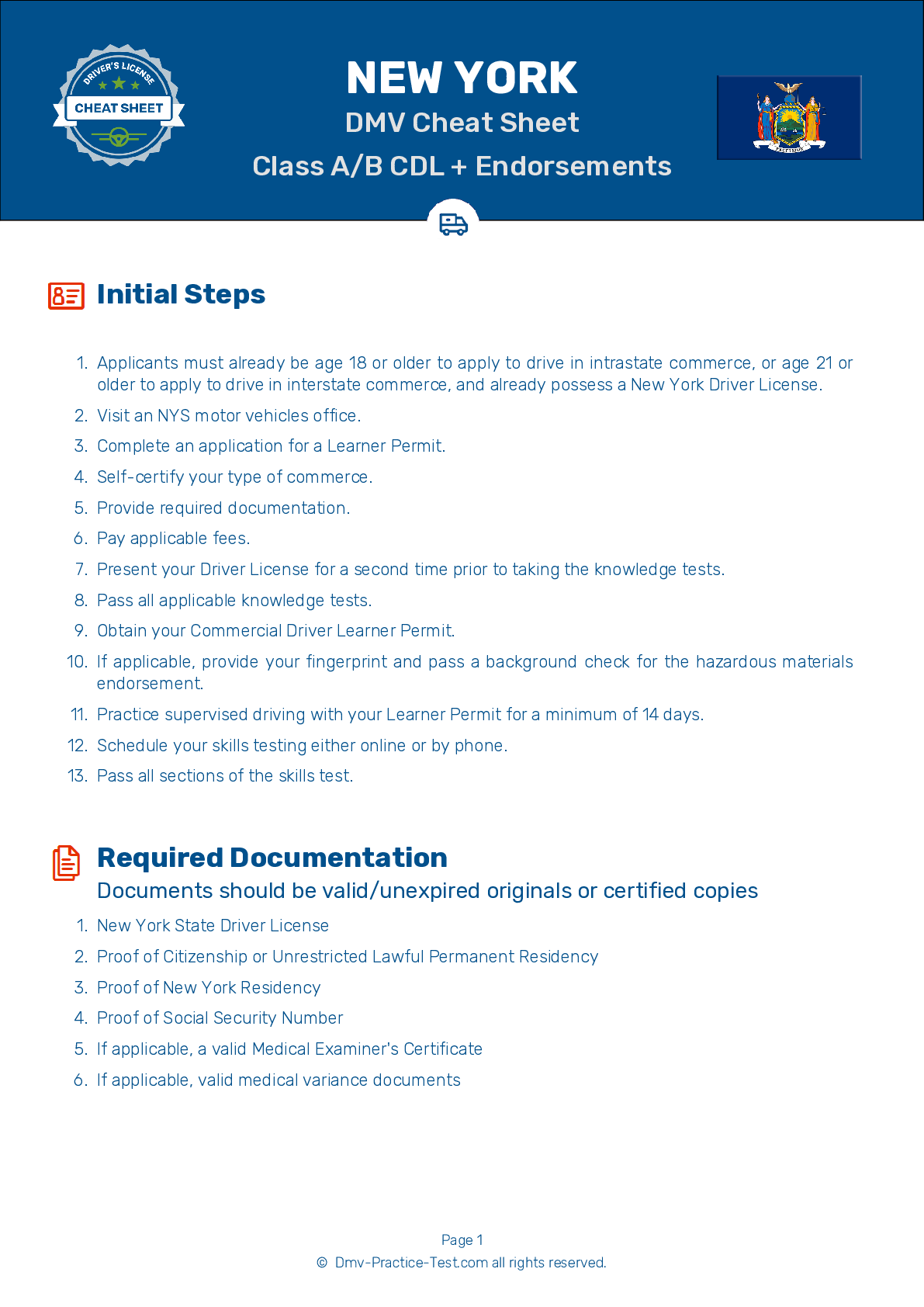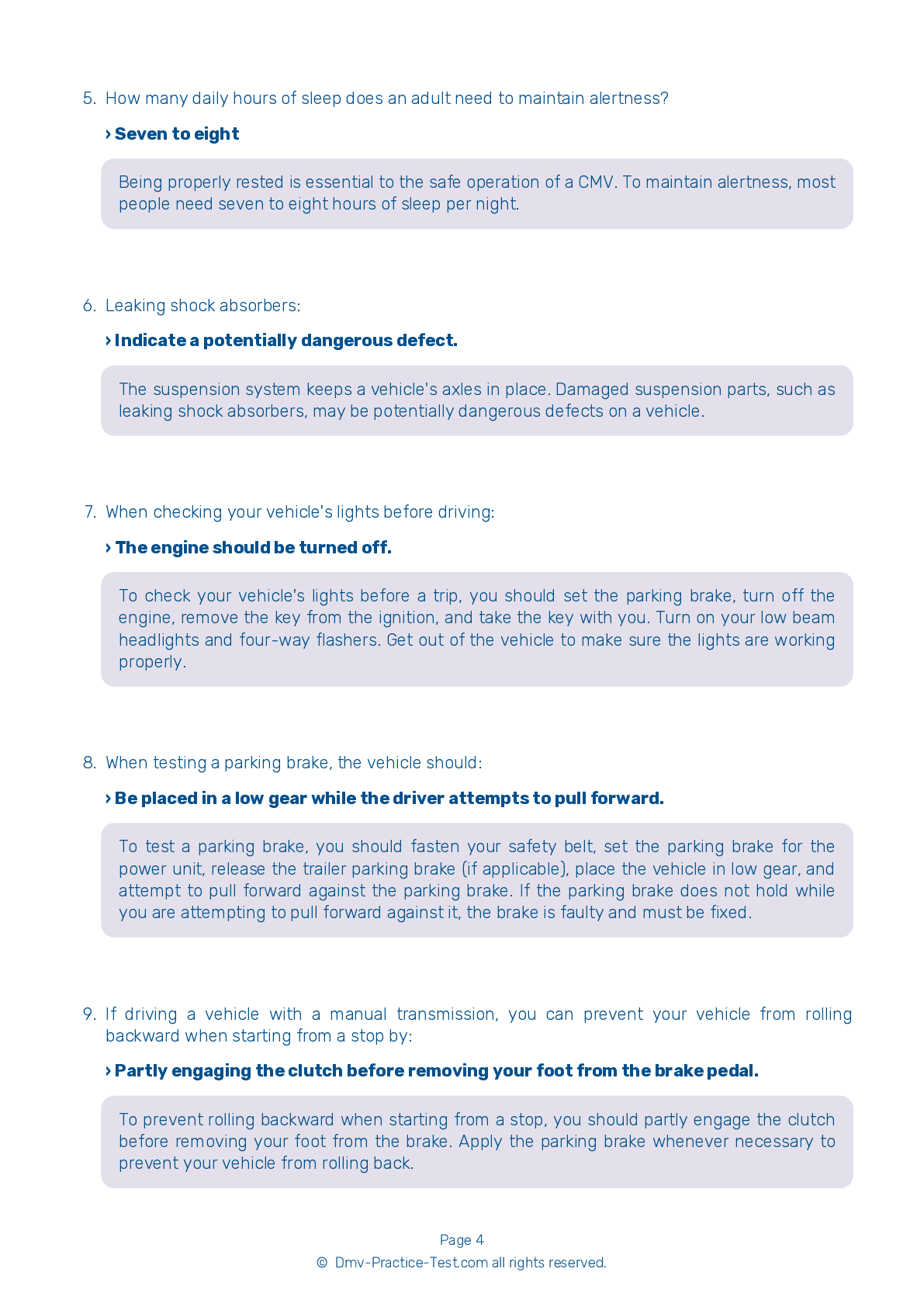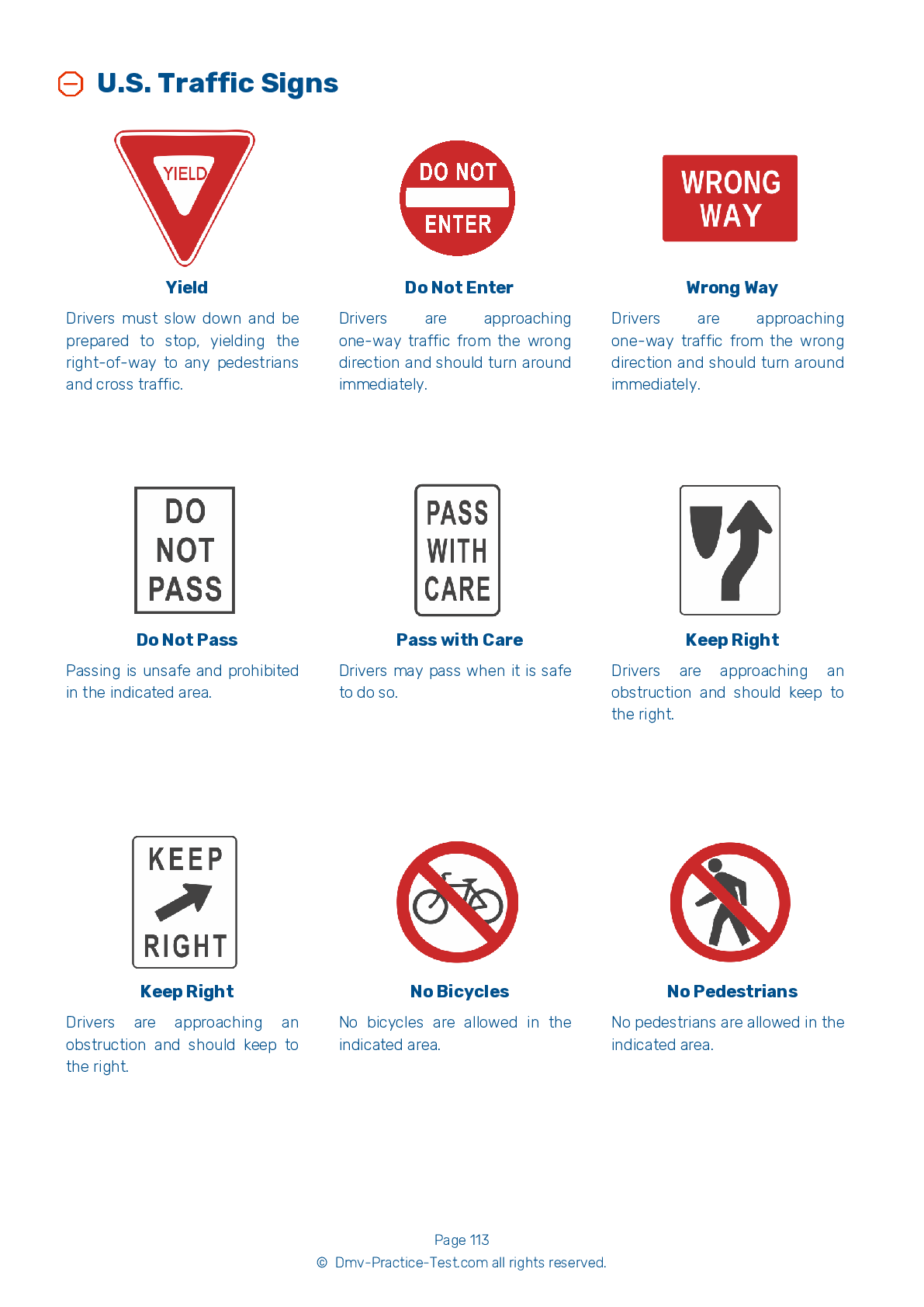Air Brakes Endorsement Test | New York 2025 #2 Page 2 of 4
Train for FREE online with our New York CDL air brake test. The official exam test consists of several obligatory parts, with all of them checking your knowledge of different blocks of road rules. If you need to obtain a NY Class A/Class B driver license in 2025, practice as much as possible. Free sample tests published on our website will help you check and improve your knowledge and boost your grades. Please bear in mind that the requirements for CDL may vary from state to state.
7 . Which of the following is not a part of an air brake system?
Air brakes consists of three separate braking systems: the service brake system, the parking brake system, and the emergency brake system.
8 . How is water and compressor oil removed from the bottom of an air storage tank?
Water and compressor oil are removed from air storage tanks through a drain valve. The water and oil can damage the brakes if left to accumulate in the system. Manually operated tanks must be drained every day to remove this build-up.
9 . When you need to stop in an emergency, you should:
If you need to make an emergency stop, you can use either the controlled braking method or the stab braking method. It's important to brake in a way that keeps your vehicle traveling in a straight line while still allowing you to turn, if necessary.
10 . In cold weather, an alcohol evaporator should be checked and filled:
An alcohol evaporator can help prevent ice from building up in an air brake system. In cold weather, the evaporator should be checked and refilled every day.
11 . During an applied leakage test, the maximum leakage rate for a triple combination vehicle is:
It is important to know the maximum air loss rate that is safe for your specific vehicle. A triple combination should have a leakage rate no higher than 6 psi in a minute during an applied leakage test.
12 . Front wheel braking works:
Front wheel braking is effective under all road conditions. It is unlikely that you will experience a front wheel skid, even on ice.
See the exact questions that will be on the 2025 New York DMV exam.
99.2% of people who use the cheat sheet pass the FIRST TIME
Lillian MCcranie explains how our CDL study guide was helpful in passing the exam and recommends it to everyone.
Cameron tells us how he purchased the CDL exam, and found it to be a useful tool which helped him pass the exam and find a job.



